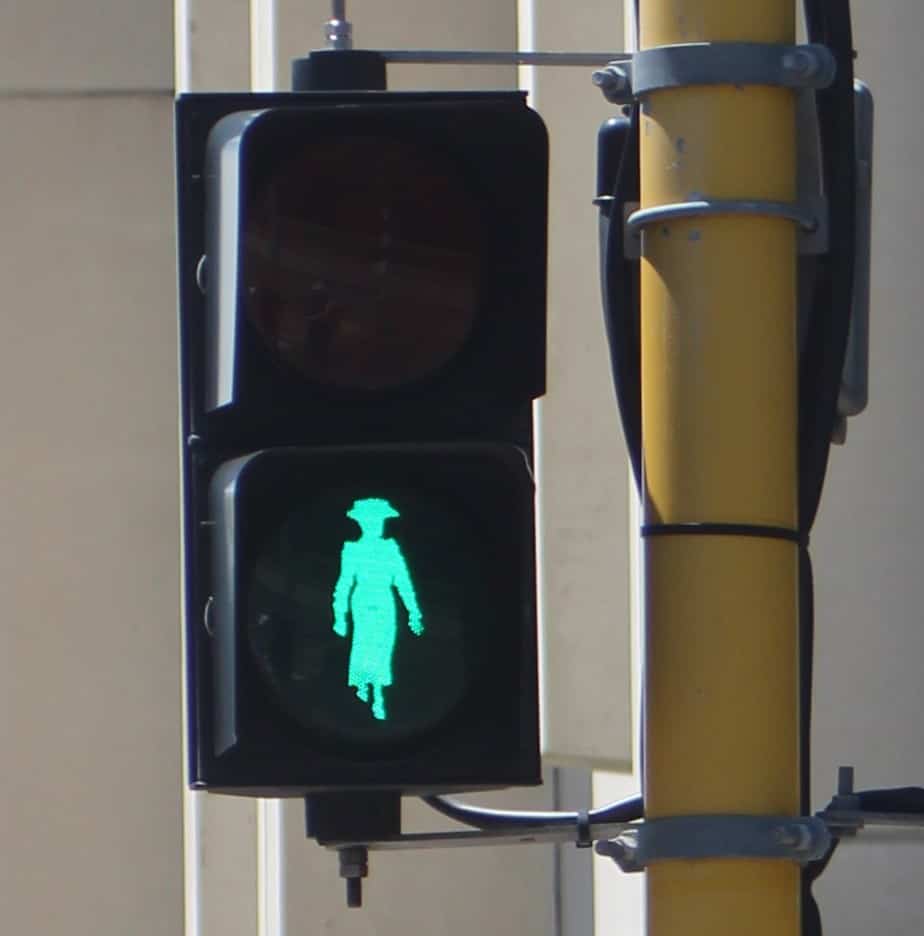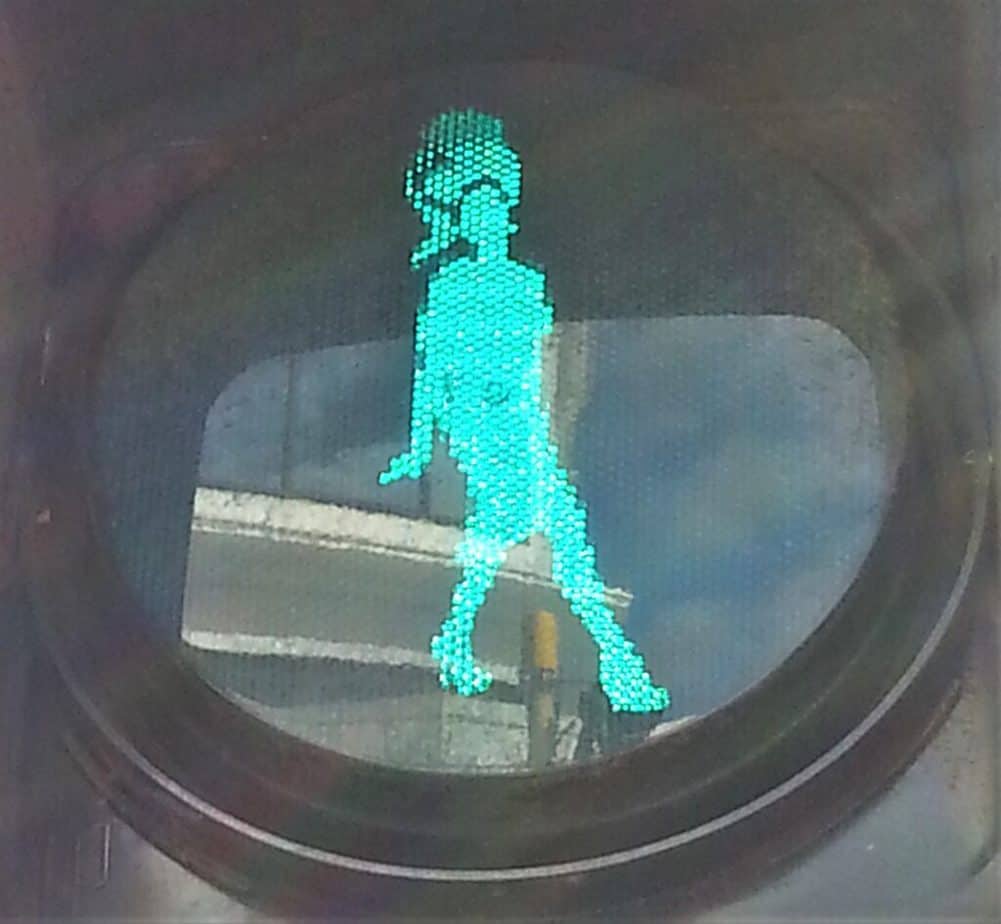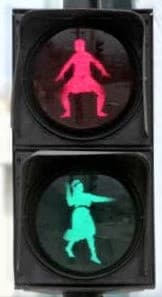Green and red crossing signals (known in New Zealand as pedestrian crossing lanterns) in Wellington celebrate the city’s history and diversity.
Wellington’s Crossing Signals origin story

Most cities and/or countries have rules outlining how crosswalk signals should look and operate. They usually have pretty standard language; something like “the signal shall have a green walking human figure signal and a red standing human figure signal placed immediately above the green human figure signal.” Notice that there’s no mention of the depiction of the figure’s gender, race, or sexual orientation. Yet, nearly all pedestrian crossing signals appear male.
However, in most cities, women walk more and, therefore, use sidewalks and crosswalks more often.
In 2009, Wellington mayor Kerry Prendergast mentioned the idea of having a woman depicted on a signal. But, it took until 2014 for that to actually happen.
Kate Sheppard
Kate Sheppard was a central figure in New Zealand’s suffrage movement and instrumental in New Zealand being the first country to have women’s voting rights in 1893. Her portrait has been on the Kiwi ten dollar note since 1991.
In 2014, Kate’s silhouette, in full Victorian costume, was added to eight pedestrian crossing lights in the capital city of Wellington near the Parliament.
Carmen Rupe

Carmen Rupe was trailblazing trans woman who fought for the rights and recognition of her community in Wellington. Carmen, as New Zealand’s first prominent drag queen and trans activist, paved the way for a more tolerant Kiwi society and gay marriage.
In 2016, to celebrate 30th anniversary of New Zealand’s Homosexual Law Reform Act, four intersections around Cuba Street, near where Carmen would often perform, were outfitted with crossing lanterns depicting a fabulous Carmen.
Kapa Haka Lanterns

Kapa Haka are songs and dances performed by Maori, the indigenous people of New Zealand. You may have seen Haka (the dance itself) performed by the world-famous New Zealand National Rugby Union Team, the All Blacks.
The Te Matatini, a performing arts festival of Kapa Haka, is held every two years around New Zealand. In 2019, to celebrate the biennial event, several crossing signals were installed around Waitangi Park. They depict a Maori figure in classic Haka poses.
Other Crossing Signals
For International Women’s Day in 2016, the city of Valencia, Spain added crosswalk signals depicting women. There’s also lights for pedestrians in São Paulo, Brazil celebrating the city’s large Japanese population. And, in Lisbon, lights have been mounted to sidewalk rather than on street lamps. This has been done to increase the safety of pedestrians who are staring down towards their phones. There’s also an adorable crossing signal in Napier, New Zealand with a person and a dog.

But, the jolliest of street crossing figures is Germany’s Ampelmann. The stout little man with a hat was used to direct pedestrians safely across streets in the former East Germany. After reunification in 1990, the Ampelmann street crossing figures continued to be used and have remained popular. There’s even a couple of Ampelmann shops in Berlin selling all kinds of trinkets and tchotchkes emblazoned with the iconic figure.
About the Author

Brent Petersen is the Editor-in-Chief of Destination Eat Drink. He currently resides in Setubal, Portugal. Brent has written the novel “Truffle Hunt” (Eckhartz Press) and the short story collection “That Bird.” He’s also written dozens of foodie travel guides to cities around the world on Destination Eat Drink, including in-depth eating and drinking guides to Lisbon, Porto, Sintra, Monsaraz, and Evora in Portugal. Brent’s podcast, also called Destination Eat Drink, is available on all major podcasting platforms and is distributed by the Radio Misfits Podcast Network.
